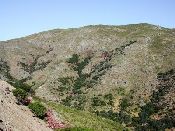|
UNDP Integrated Drylands Development Programme |
 |
| IDDP |
Integrated Drylands Development Programme |
| Time span: |
ongoing, since 2001 |
| Aim: |
The Integrated Drylands Development Programme (IDDP) is the framework through which the support of the UNDP Drylands Development Centre (DDC) is delivered to programme countries. It takes a people centered approach, whose development objective is to contribute to rural poverty reduction and increased food security for the communities living in the rural drylands in the affected countries. The immediate objective is to catalyze and energize the implementation of the MDGs in the affected countries by 2015. It is expected that this will result in improved livelihoods and social-economic well-being of drylands communities. This will be achieved through:
- Effective mainstreaming of drylands issues into development frameworks leading to budgetary allocation for implementing livelihoods options on the ground; advocacy, awareness creation and policy dialogue at national and sub-national levels.
- Improve living standards for rural communities living in the drylands through strengthening the rural economy and creating and implementing livelihood opportunities; lessons learnt from these will inform policy processes.
- Increase resilience and sustainability of the rural livelihoods system through improved capacity of local communities for governance and sustainable management of local resources.
|
| Countries: |
IDDP currently operates in 17 countries in Sub-Saharan Africa and the Arab States. |
| Website: |
http://www.undp.org/content/undp/en/home/ourwork/global-policy-centres/sustainable_landmanagement/integrated_drylandsdevelopmentprogramme.html |
|



